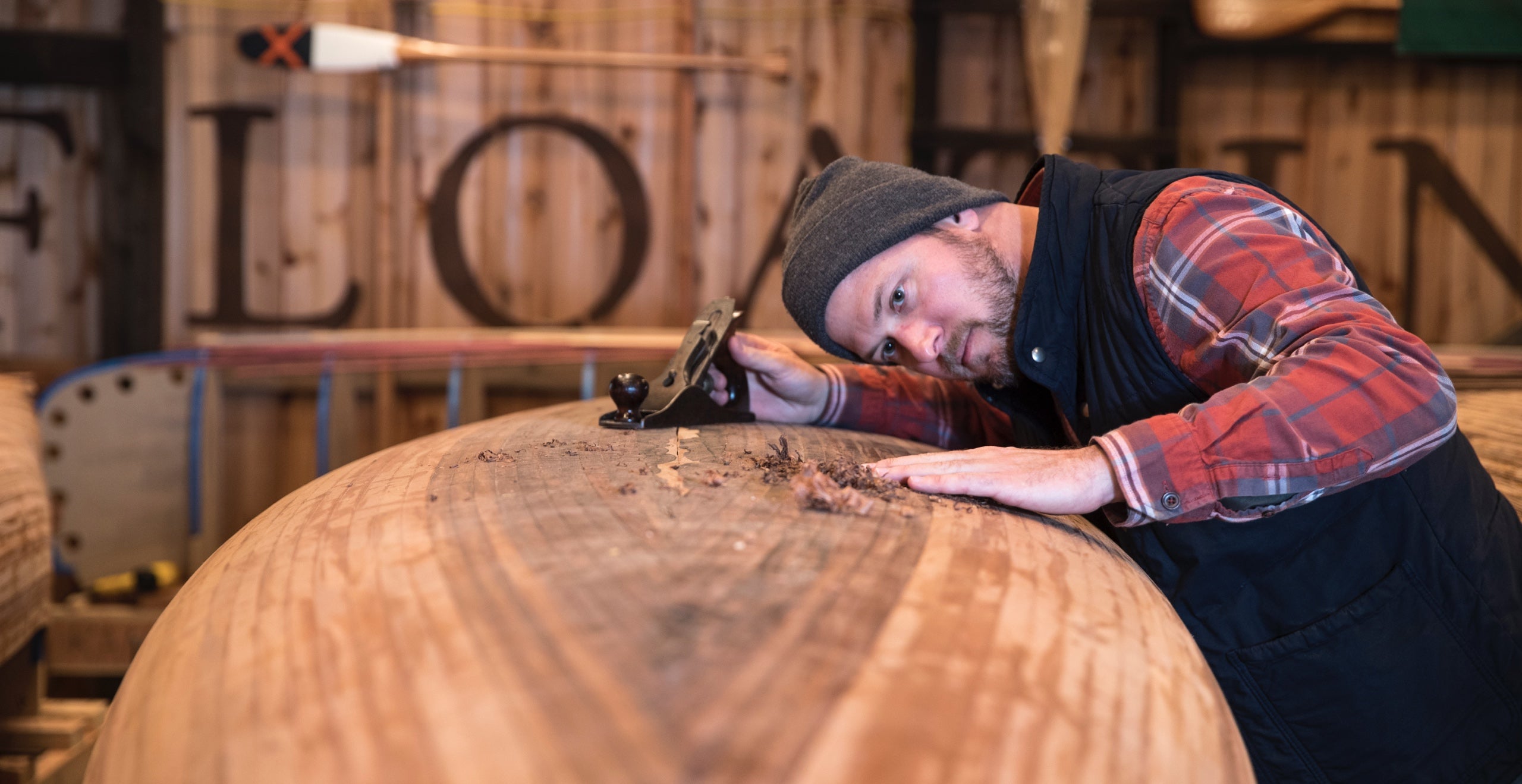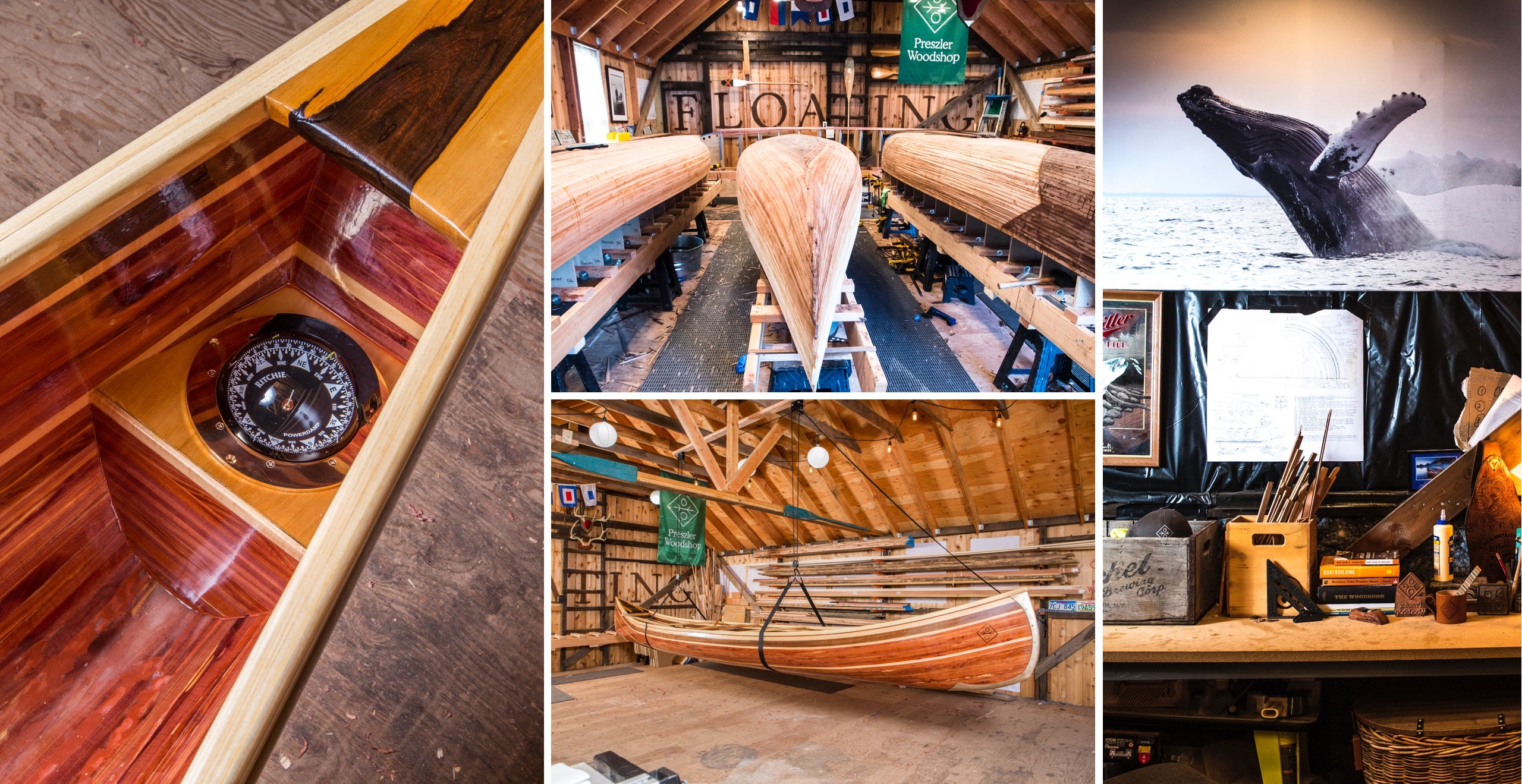
An Even Keel
A serendipitous gift led Trent Preszler to embrace an unexpected craft—making one-of-a-kind wooden canoes by handA decade ago, Trent Preszler would have been the first person to tell you he had no business wielding a set of tools, but there came a pivotal moment in 2014 that would change the course of his life forever. His father had passed away, and what was bequeathed to him was far from a trove of family heirlooms. Instead, it was a simple chest of tools. “He was a big rodeo cowboy in South Dakota on a 10,000-acre cattle ranch, a rough neck guy,” Preszler says. “We were estranged for a long time but he invited me home for Thanksgiving and passed away about a week later.”
Left reeling from this unexpected loss, Preszler reflected on some of the fond memories he had with his father before they had grown apart, including their time spent duck hunting in their family’s canoe. “I thought about that, and the fact that he had left me this toolbox, and made the decision to build a canoe,” he says. “It was a crazy decision, because I’d never built anything in my life before—really nothing. I had never even used a saw.”

The process began to unfold in the living room of his Long Island home, where he relocated in 2002 for a new CEO role with a local winemaker. Despite his considerable academic achievements—he holds two degrees, in Agricultural Economics and Viticulture, from Cornell University—Preszler remained daunted by the idea of handiwork. He started simply enough, by learning to use power tools for the first time. “I referred to a few boatbuilding books, but didn’t have anyone helping me, so I made plenty of mistakes along the way,” he says. “But I found a lot of value in this constant renewal through trial and error.”

As the boat began to take shape, he quickly realized that the compounding sawdust would force him to find a proper workshop. He settled on a former blacksmith’s shed tucked just off the main road in Mattituck, New York, the front facade of which dates back to the early 1800s. Inside, he toiled away for nearly a year, layering the canoe’s cedar strips methodically and with detailed precision around their frame to form a perfectly smooth, curved hull. After sanding away the remnants of wood glue, and sealing the boat with layers of fiberglass, he was left with a handsome 20-foot canoe.
In its final form, the vessel, which now hangs in the workshop, is a gleaming specimen of both craftsmanship and artistry. Preszler’s personal discovery along the way—that he is, indeed, a talented woodworker—soon left him with a long waiting list of admirers and clients alike. It began with a family seeking a show piece for their vacation home on Lake Lucerne in Switzerland, followed by two more on Long Island’s South Fork, and most recently one for a country music star in Nashville, Tennessee. “I never intended for this to be a real business,” Preszler says with a laugh. “But I received an order for another one, and then another one, and I thought, ‘What did I do?’”

Given the painstaking level of detail each boat requires, Preszler is careful to limit his production to just one or two boats per year, so as not to sacrifice quality. This includes the saddle leather and waxed hemp seats, the crystal bezel and bronze nautical compass, and the duo of oars, also dipped in a layer of bronze, and presented with each completed canoe. Still, no detail is more important than the wood, from Mexican ziricote to black walnut to aspen to ash, and how each type is treated. “I don’t believe in using stains,” Preszler says. “There’s enough biodiversity in the tree world that I can find the wood I need to get the right color variation,” he adds while running his fingers along the bow of a canoe in progress, which features a series of African zebrawood strips interlocked into a pattern that resembles a stack of pointed feathers. Added touches like this are what set Preszler’s creations apart.

There are more futuristic innovations, too. Next, he is collaborating with a group of Newport, Rhode Island–based naval architects to bring a new hybrid vessel to life. “It’s sort of a cross between a canoe and a skiff and a kayak,” he says, thumbing through a stack of 3D renderings, like the one seen here to the left. “It’ll be very streamlined, flat, only 6-inch drag, and an open transom in the back, where we want to put a solar electric motor. There’s not a boat like this on earth.” And this, it turns out, is the essence of Preszler’s craft. While he does make beautiful canoes with his own two hands, he always remains in pursuit of a new perspective. “I like this idea of contributing to the boating world with these creations that aren’t easily defined,” he says. “Because I don’t think I’m easily defined either.”
Preszler’s memoir, Little and Often, is out now from William Morrow.
- Images courtesy of Trent Preszler






